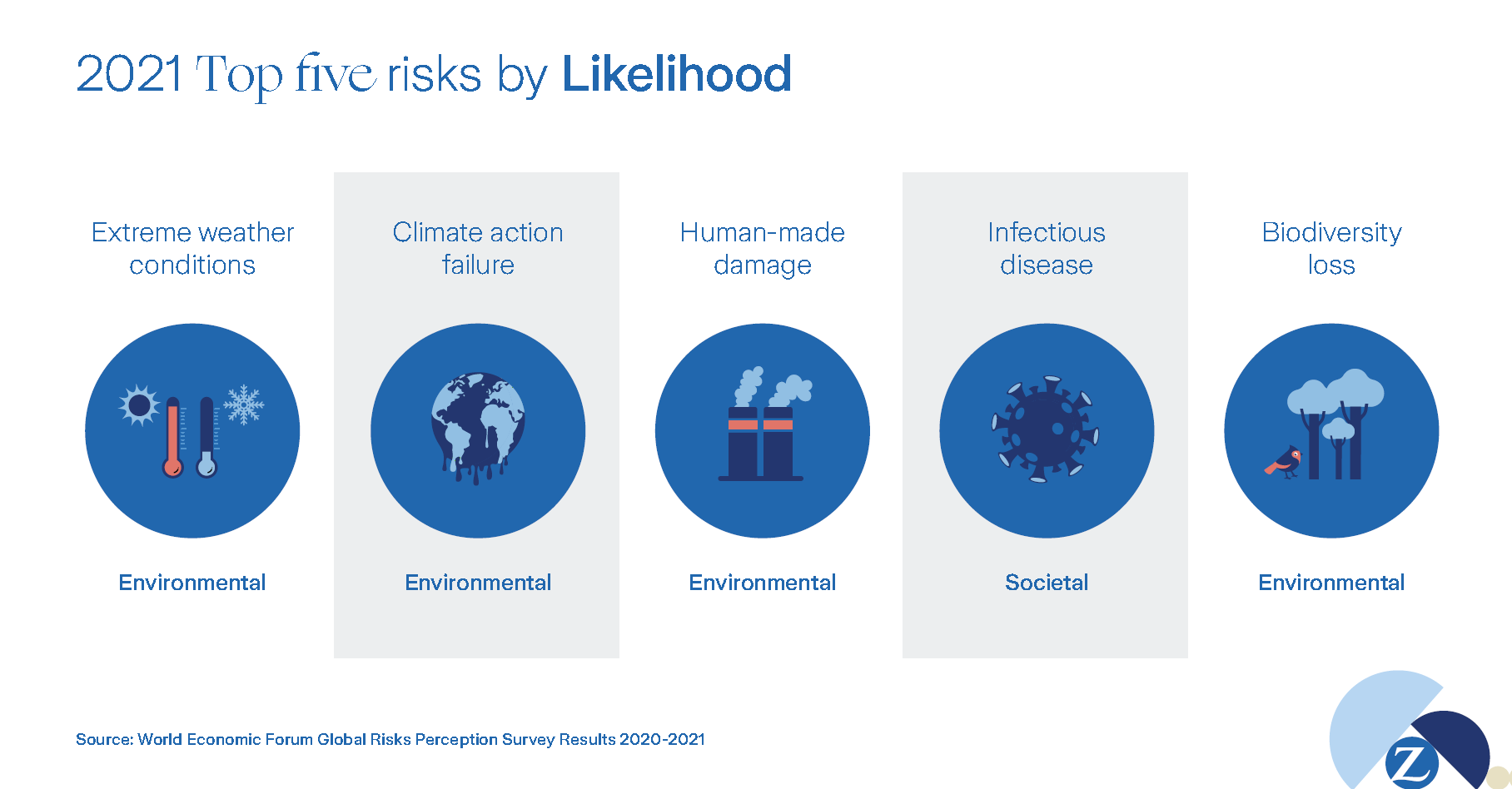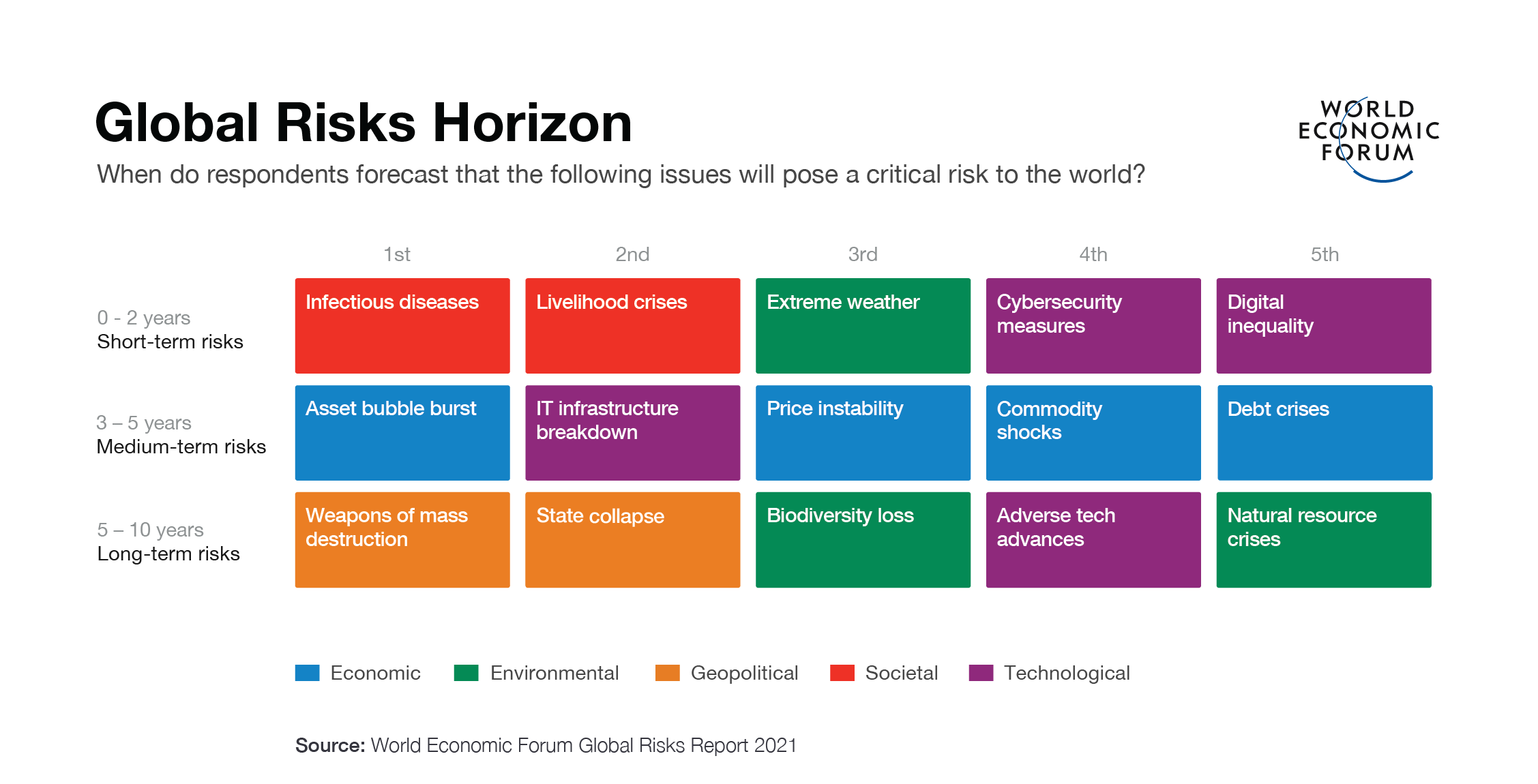The Global Risks Report 2021
Global risksArticleJanuary 19, 2021
COVID-19 has changed the global risk landscape. Risks have been reprioritized, new risks have emerged, and others have been intensified.
According to the Global Risks Report 2021:
- COVID-19 could widen the gap between the ‘haves’ and ‘have-nots’ causing billions of people to miss out on future opportunities
- The pandemic uncovered a digital divide as we were forced to work, learn, communicate and access health and financial services online.
- Environmental risks continue to threaten: they remain top risks by likelihood and impact in this year’s survey
The impact of COVID-19 means that Global Risks Report 2021 is one of the most important since its inception in 2006. The pandemic has radically altered the global risk landscape. Existing disparaties and societal risks in terms of health outcomes, technology or workforce opportunities have been intensified.
It has forced us to work, learn, communicate and access health and financial services through digital interfaces. Yet it also uncovered digital disparities and left us more exposed to cyberattack.
The gap between the ‘haves’ and have-nots’ between countries and within countries could substantially widen causing billions of people to miss out on future opportunities. In particular, young people who are about to experience the effects of their second major global crisis within a decade.
But, despite the impact of the pandemic, environmental risks continue to dominate the top spots by impact and likelihood towards the next decade.

For the first time, the report also rates risks according to when respondents perceive they will pose a critical threat to the world. Short-term threats (0-2 years) show concern with the immediate impact of the crisis on lives and livelihoods — among them infectious diseases, livelihood crises, digital inequality and youth disillusionment.
In the medium-term (3-5 years), respondents believe the world will be threatened by knock-on economic and technological risks which may take some years to crystalize — such as asset bubble bursts, IT infrastructure breakdown, price instability and debt crises. Existential risks —weapons of mass destruction, state collapse, biodiversity loss and adverse technological advances — dominate long-term concerns (5-10 years).

Ultimately, the COVID-19 crisis has been a stress test of our collective capacity to respond to global shocks. The Global Risks Report 2021 reflects on global resilience in its opening chapter, offering lessons learned to help countries, businesses, and the international community to act, rather than react, in the face of cross-cutting risks. These lessons include formulating analytical frameworks, fostering risk champions, building trust through clear and consistent communication, and creating new forms of partnership.
Find out more in downloading the Global Risks Report 2021.




